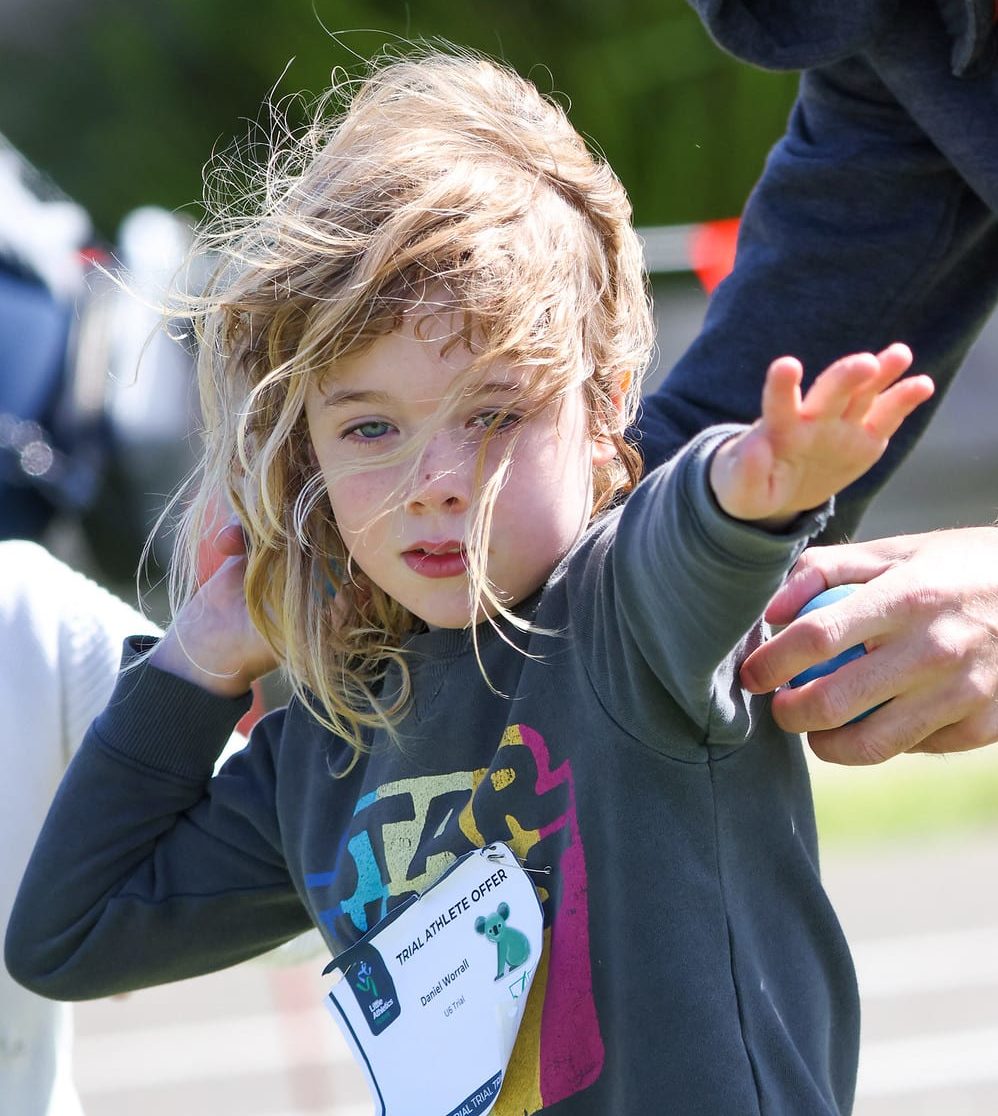Torquay resident Claire Osborne, saw the potential to develop a local Surf Coast Little Athletics club as she witnessed membership at Geelong Little Athletics grow to overflowing. Some children were starting to feel that they were spending more time waiting for events and commuting, rather than participating.
Somewhere between recognising that the Surf Coast needed Little Athletics and putting a committee together, Claire connected to Leisure Networks. She had already done the power work in the background; completing a survey of 260 local families that uncovered a real need and interest in developing a local athletics competition. The survey also provided data around interests, age groups, and potential volunteers.
“I ran for Box Hill,” says Claire in explaining her motivation. “We had Wes Windsor and Greg Mackay come to our school and they ran a before school running program. The result of that was that our public girl’s school was a really good school for running and we beat all the private schools and won the state and then the nationals. So we went off to a world schools’ cross-country championships. What I see in that is that those opportunities aren’t there for everybody. Usually, they’re just there for people who can afford to pay for private coaching but if you can bring coaches into your local community then these kinds of things are possible for the kids that go to schools that wouldn’t otherwise have the opportunity to do that.”
Through the Together More Active funding (Sport & Recreation Victoria), Leisure Network’s role in the Barwon Region is to provide 1:1 support and connection to sector partners to provide advice, experience, support and recommendations that bring community sporting opportunities to life.
“To do this piece of ongoing work we meet regularly (online!), exchange ideas, info, documents and talk through the challenges and opportunities. This results in strong, robust community clubs that people can connect with. They are inclusive, they are safe, they are fun, and people can connect to their community.” Brooke Connolly, Manager, Sport, Recreation & Health
Leisure Networks helped connect Claire and the committee to Little Athletics Victoria and the Surf Coast Shire to work through the process of developing a new centre.
“We’re here as a community partner,” explains Brooke. “Old clubs, new clubs, emerging clubs, starting clubs can lean on us. If we’ve got a connection to the local government or the governing body or a consultant, then we will work to join those dots.”
Through the survey, Claire captured contact details of families who were interested in finding out more about Little Athletics. This is where awareness started to build. There were also a few ads in local papers looking for partners, but most of the community awareness grew through organic social media promoting an open “Come & Try” day.
Nationally, interest in athletics is on the decline and Little Athletics Victoria set the groups expectations at attracting around 30 to 40 participants to the “Come & Try” day.
The group were overwhelmed when around 280 people turned up. It was well above expectations and really more than they thought they could handle. But they embraced the crowd and took the event in their stride.
“When you’re trying to build a really valid cause to do something, you have to be uncomfortable,” says Claire. “I was really lucky to have people around me that encouraged me and reminded me that this is actually a business, what we’re selling is memberships and we need as many people there as possible and we want to convert as many of them as possible to members. It was good not to be quiet and downplay what we were doing.”
This initial even converted to 100 members. The incredible result meant the group was a viable concern and needed to find facilities. Through conversations with Surf Coast Shire, Little Athletics Victoria and Leisure Networks the committee found the option to use facilities at Torquay College. It is a good space, but not an ideal space.
“It’s an example of where a multi-use facility just doesn’t work,” explains Claire. “All athletics tracks, virtually, are designated spaces. Some of them can be open and they can be grass but anything that has been modified as multipurpose will take away the infield, which is how athletics functions to hold all the events.”
The committee’s next big priority, aside from building membership, is developing infrastructure. Equipment has been purchased, thanks to a grant awarded from the Surf Coast Shire; Geelong Little Athletics donated high jump mats; and Torquay college lend them hurdles.
“Similar to what Leisure Networks has been in the puzzle of pieces, what I’ve found is that there’s been this amazing web of people who really do want to see it succeed,” says Claire.
Claire and the committee are starting to extend their network further, seeking a permanent home for Surf Coast Little Athletics. The equipment they own is currently stored in a rented a shipping container. They want to invest in more equipment, which means they need storage space, which ultimately means that the group need a permanent home.
Claire has a vision to open competition down the coast. Finding funding is only half the problem, and she sees an opportunity to build networks that enables groups to share capital costs. Leisure Networks is proud to be part of this journey.
“Leisure Networks and regional sports assemblies’ role is around advocacy and overcoming barriers to new initiatives,” says Brooke. “We often play a key role in brokering relationships between community groups and local government.”
